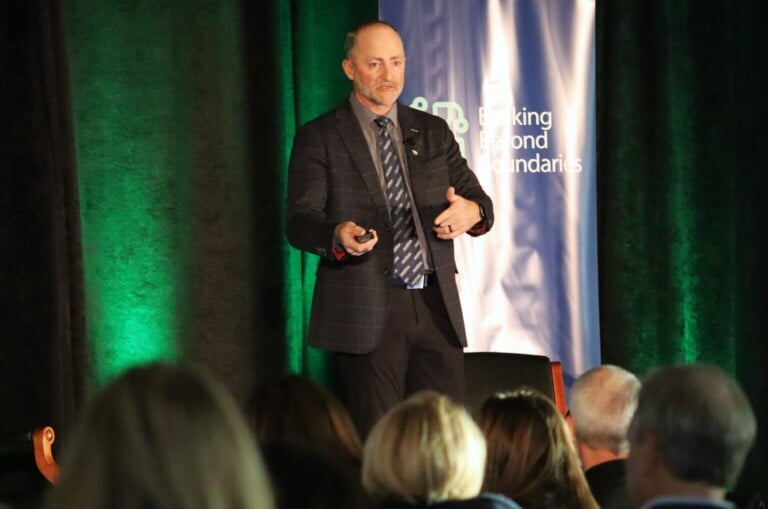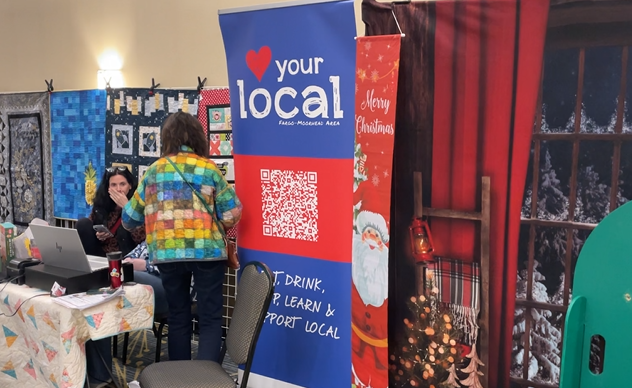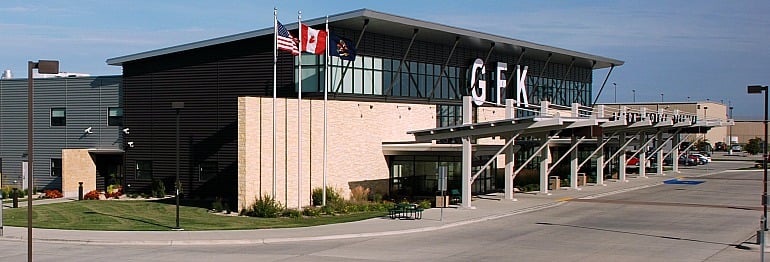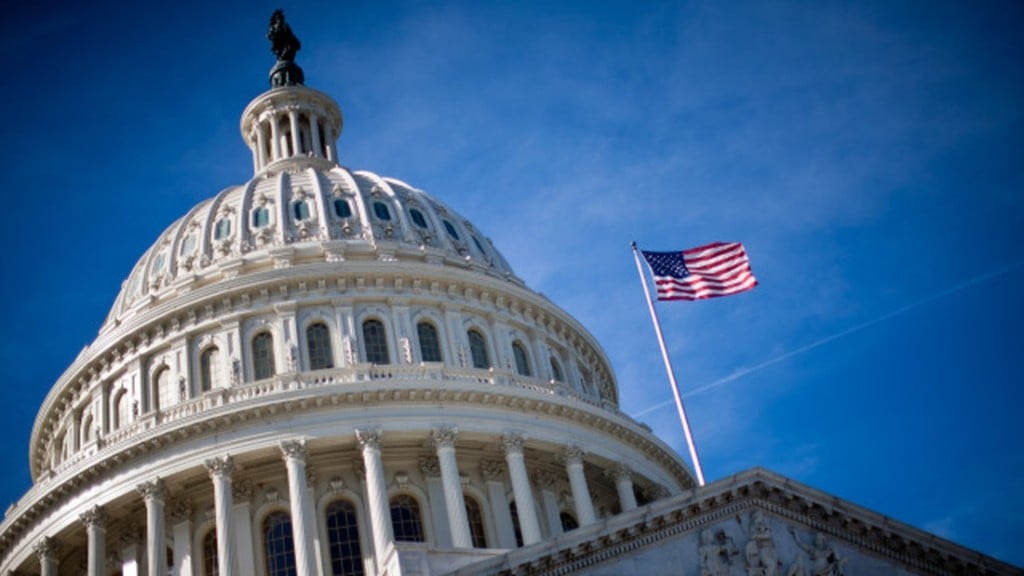Bank of North Dakota to launch state’s first stablecoin known as Roughrider coin

BISMARCK, N.D. (North Dakota Monitor) — The Bank of North Dakota announced Wednesday plans to launch the Roughrider coin, the state’s first stablecoin.
Stablecoin is a type of cryptocurrency that can facilitate instant money transfers, streamline bank-to-bank transactions and, potentially, be used by North Dakotans in daily life down the road. Unlike bitcoin, stablecoin is not subject to volatile price swings because it’s backed by conventional financial assets, overwhelmingly the U.S. dollar.
North Dakota’s state-owned bank is partnering with Fiserv, a Fortune 500 financial technology company, to introduce stablecoin into the state’s banking system, officials announced at a conference in Bismarck.
Bank of North Dakota President and CEO Don Morgan said the move aims to ensure “the continued health, resilience and relevancy” of North Dakota banks and credit unions.
“We have a 106-year history of commitment to North Dakota agriculture, commerce, and industry through our financial institution partnerships,” Morgan said in a statement. “The development of the Roughrider coin reflects that commitment.”
The first test of the stablecoin in North Dakota banks and credit unions is expected to occur in 2026. It will require the approval of the North Dakota Industrial Commission, which oversees the Bank of North Dakota.
“As one of the first states to issue our own stablecoin backed by real money, North Dakota is taking a cutting-edge approach to creating a secure and efficient financial ecosystem for our citizens,” Gov. Kelly Armstrong, who chairs the Industrial Commission, said in a statement.
What is stablecoin?
Stablecoin is a type of cryptocurrency that uses blockchain technology, similar to bitcoin.
Most stablecoins, like the Roughrider coin being proposed in North Dakota, are tied to the value of the U.S. dollar. Federal law requires each stablecoin in circulation to be matched by a U.S. dollar or equivalent, such as a short-term U.S. Treasury note, held in reserve by a financial institution. That’s why stablecoin is not subject to the volatile price swings of bitcoin and other popular digital assets.
This digital currency is issued, or minted, on demand as the need arises. When the owner of the stablecoin wants to redeem it, the currency is dissolved, or burned, and taken out of circulation.
The Bank of North Dakota is envisioning stablecoins to primarily be used in bank-to-bank transactions, said Rick Geloff, the bank’s executive vice president. Money transfers that used to take days will be able to take place within minutes, he said.
“That’s what we’re trying to make sure that our financial institutions in North Dakota can do is move that money quicker and more efficiently,” Geloff said.
The name Roughrider honors the volunteer military unit led by President Theodore Roosevelt.
Will banking customers see a difference?
Customers are unlikely to notice any significant differences in their banking experience as a result of the Roughrider coin’s implementation, Geloff said, because most of the changes will take place behind the scenes.
While stablecoins are used elsewhere in the world in daily transactions with a merchant or retailer, that’s not the goal of North Dakota’s Roughrider coin initially.
“This would be more of the back end, helping banks facilitate payments to each other,” Geloff said.
That could change in the future if retailers and other businesses begin accepting stablecoin as a form of payment.
Dan McGonegle, senior manager of the digital assets team at accounting and consulting firm Crowe, said one advantage to stablecoin from a merchant’s perspective may be significantly lower transaction fees. Merchants have to pay fees to process payments made with credit or debit cards. Stablecoin potentially offers a cheaper alternative, he said. If merchants choose to encourage customers to use the digital currency as a way to lower their costs, that could speed up widespread adoption.
“If I’m a large merchant, then I may have real incentive to encourage my customers to transact in stablecoins,” McGonegle said. “I think it still remains to be seen how that could all play out.”
Earlier this year, Wyoming took a different approach and launched its own stablecoin known as the Frontier Stable Token. Geloff said this is an example of stablecoins being marketed for use by the public.
Stablecoin has been more widely adopted in countries where the traditional currency is volatile, such as Venezuela and Argentina, Geloff said.
Why now?
The Bank of North Dakota began exploring stablecoin after federal legislation, called the Genius Act, was signed into law by President Donald Trump in July.
This law created 80% of the federal regulatory framework for stablecoin, Geloff said, providing certainty and safeguards that have made it possible for mainstream financial institutions to begin considering using it.
It’s a new financial tool that offers a lot of potential, but can be daunting to begin using, said Kelvin Hullet, the bank’s chief business development officer. So the bank, like it did when the internet was introduced to the banking world, is doing the legwork on behalf of its local banking partners to ensure they can take advantage, he said.
The Bank of North Dakota is working with Fiserv to create the Roughrider coin, hosted on Fiserv’s digital asset platform, for use in bank-to-bank money transfers.
The bank will present an analysis to the North Dakota Industrial Commission about how banks will use the new tool, a risk assessment to ensure the appropriate safeguards are in place, and cost projections.
If the plan is approved, the Bank of North Dakota will roll out a pilot project with a handful of local financial institutions as partners.
The federal Genius Act was a signal that the bank needed to consider adopting the technology or get left behind, Hullet said.
“Congress has now put a framework around this. The train is leaving the station, and we need to be not only on the train, but we need to bring our local financial institutions along with us, so that they are able to utilize this new technology as it moves forward,” Hullet said.
North Dakota Monitor reporter Jacob Orledge can be reached at jorledge@northdakotamonitor.com.






